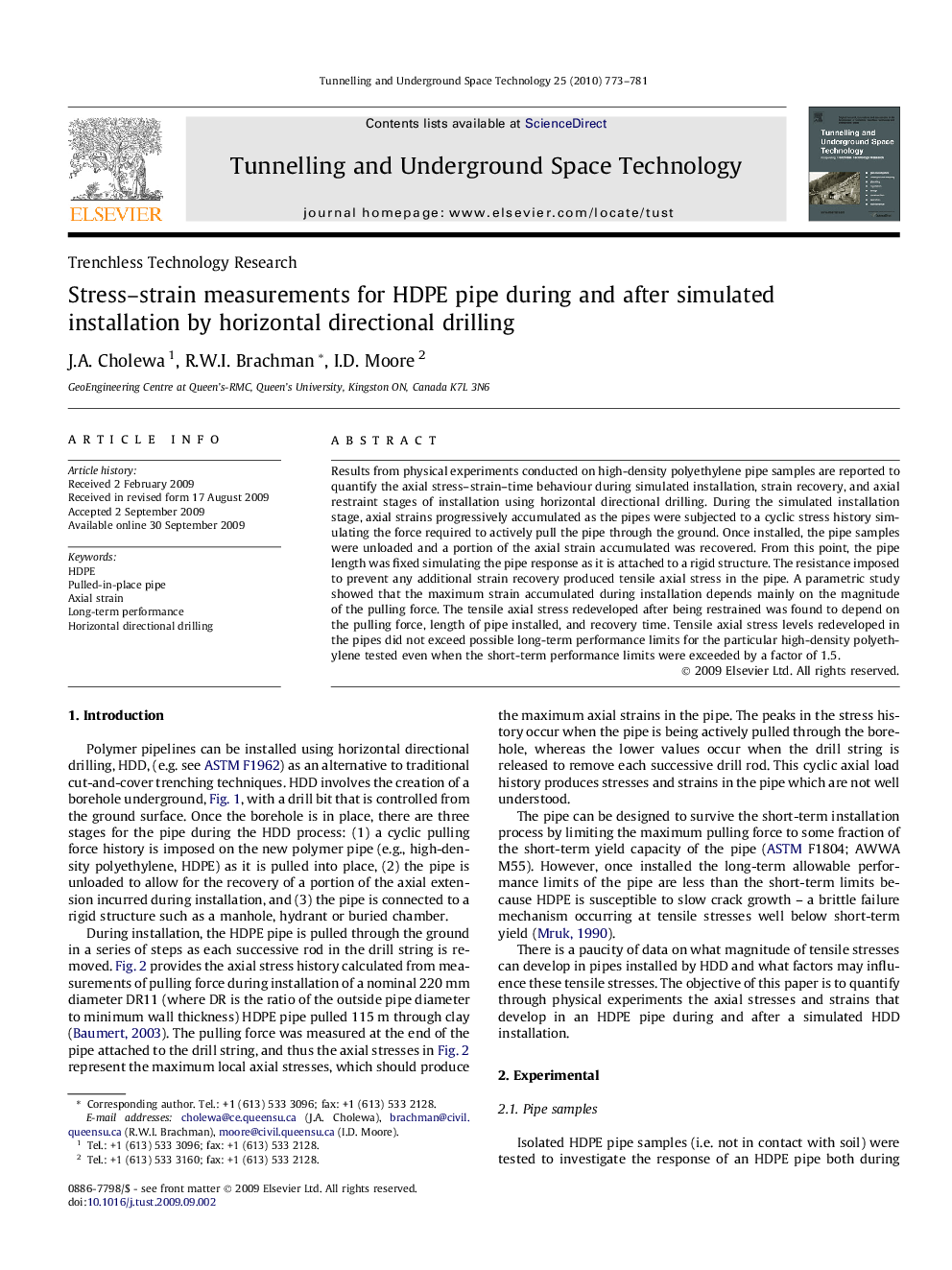| Article ID | Journal | Published Year | Pages | File Type |
|---|---|---|---|---|
| 310796 | Tunnelling and Underground Space Technology | 2010 | 9 Pages |
Results from physical experiments conducted on high-density polyethylene pipe samples are reported to quantify the axial stress–strain–time behaviour during simulated installation, strain recovery, and axial restraint stages of installation using horizontal directional drilling. During the simulated installation stage, axial strains progressively accumulated as the pipes were subjected to a cyclic stress history simulating the force required to actively pull the pipe through the ground. Once installed, the pipe samples were unloaded and a portion of the axial strain accumulated was recovered. From this point, the pipe length was fixed simulating the pipe response as it is attached to a rigid structure. The resistance imposed to prevent any additional strain recovery produced tensile axial stress in the pipe. A parametric study showed that the maximum strain accumulated during installation depends mainly on the magnitude of the pulling force. The tensile axial stress redeveloped after being restrained was found to depend on the pulling force, length of pipe installed, and recovery time. Tensile axial stress levels redeveloped in the pipes did not exceed possible long-term performance limits for the particular high-density polyethylene tested even when the short-term performance limits were exceeded by a factor of 1.5.
